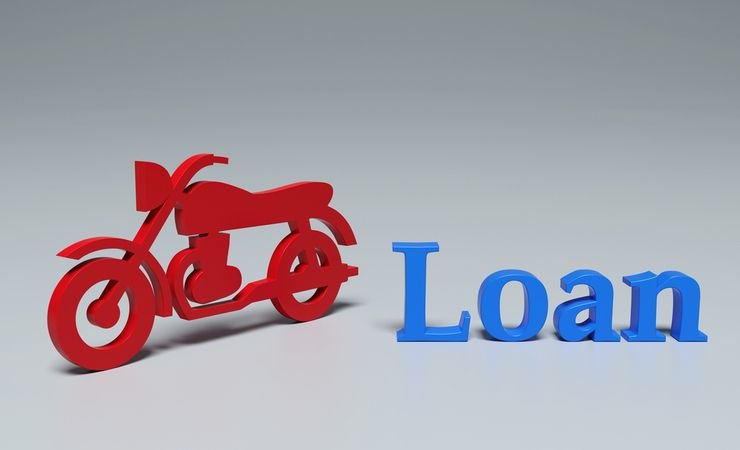Refinancing a motorcycle loan can be a strategic financial move that helps lower your monthly payments, reduce your interest rate, or even pay off your loan faster. But when is the right time to do it? And how soon can you refinance a motorcycle loan after the initial purchase? In this in-depth guide, we’ll cover everything you need to know—from timing and eligibility to benefits, risks, and practical tips—to help you make an informed decision.
What Is Motorcycle Loan Refinancing?
Motorcycle loan refinancing is the process of replacing your current loan with a new one, usually with better terms. This could mean:
- Lower interest rate
- Longer or shorter loan term
- Reduced monthly payments
- Switching from a variable to a fixed rate (or vice versa)
When you refinance, your new lender pays off your existing loan and issues you a new loan with updated terms. You then make payments to the new lender.
How Soon Can You Refinance a Motorcycle Loan?
1. Immediately (in Rare Cases)
Some lenders allow refinancing immediately after the loan is issued. However, this is uncommon and depends on factors like:
- The lender’s specific policies
- Your credit score
- The stability of your income
Generally, immediate refinancing is only practical if your initial loan was through a dealership with a high interest rate, and you quickly qualify for better terms elsewhere.
2. After 30 to 90 Days
Most financial institutions recommend waiting at least 30 to 90 days. During this period:
- Your first payments are recorded, establishing payment history
- The loan is officially added to your credit report
- You begin to build equity in the motorcycle
This timeframe helps you demonstrate creditworthiness, which improves your chances of securing better refinancing terms.
3. After 6 Months or More
This is often the ideal time to refinance. Why?
- You’ve likely made several on-time payments
- Your credit score may have improved
- You’ve had time to evaluate your financial goals and plan accordingly
Lenders are more likely to offer better rates to borrowers who show responsible repayment behavior over several months.
Factors That Affect Refinancing Eligibility
1. Credit Score
Your credit score is one of the most critical factors. A score of 660 or higher can help you qualify for more favorable terms. If your score has significantly improved since your original loan, refinancing can save you a substantial amount of money.
2. Loan-to-Value Ratio (LTV)
Lenders assess your motorcycle’s current market value compared to the remaining balance on your loan. If you owe more than the bike is worth (“underwater”), refinancing becomes more difficult.
3. Income and Employment Stability
Lenders want to see consistent income. Be prepared to show:
- Recent pay stubs
- Tax returns (for self-employed borrowers)
- Proof of employment
4. Loan History
Your existing loan’s payment history matters. On-time payments reflect positively, while late payments could hurt your chances of approval.
5. Age and Condition of the Motorcycle
Older motorcycles or those in poor condition may not qualify for refinancing, especially if their value has depreciated significantly.
Why Refinance a Motorcycle Loan?
1. Lower Interest Rates
Interest rates fluctuate. If market rates have dropped since your original loan or your credit profile has improved, you could secure a lower rate.
2. Reduced Monthly Payments
Refinancing may allow you to extend the loan term, lowering your monthly payment and freeing up cash for other expenses.
3. Pay Off the Loan Sooner
On the flip side, shortening the loan term can help you pay it off faster, reducing the total interest paid over time.
4. Switching Lenders
If you’re unhappy with your current lender’s customer service, refinancing gives you a chance to switch to a more reputable or convenient financial institution.
5. Consolidating Debt
Some lenders allow you to consolidate multiple debts into a single loan, including your motorcycle loan, potentially simplifying your finances.
Risks of Refinancing
1. Fees and Charges
Some loans include:
- Prepayment penalties for paying off the original loan early
- Loan origination fees for the new loan
- Title transfer or processing fees
These can offset the savings gained from refinancing.
2. Longer Repayment Term
While extending your loan can lower your monthly payments, it may increase the total interest paid over the life of the loan.
3. Temporary Dip in Credit Score
Applying for new credit results in a hard inquiry, which may cause a small, temporary drop in your credit score.
4. Depreciation Concerns
Motorcycles depreciate quickly. If the value of your bike drops too much, it may not be worth refinancing at all.
Steps to Refinance a Motorcycle Loan
1. Review Your Current Loan
Check:
- Current interest rate
- Remaining balance
- Monthly payment
- Any penalties for early payoff
2. Check Your Credit Report
Get a free copy of your credit report and correct any inaccuracies. A better credit score can help you qualify for better rates.
3. Determine Your Motorcycle’s Value
Use tools like Kelley Blue Book or NADA Guides to estimate the current market value of your bike.
4. Shop Around
Compare offers from:
- Banks
- Credit unions
- Online lenders
- Motorcycle financing specialists
5. Calculate the Savings
Use a loan calculator to determine whether refinancing will save you money in the long term. Include fees in your calculations.
6. Apply and Submit Documentation
Be ready to provide:
- Identification
- Proof of income
- Motorcycle details (make, model, VIN)
- Proof of insurance
7. Close the Loan
Once approved, the new lender will pay off your existing loan. You’ll start making payments to the new lender based on the new terms.
Tips for Successful Motorcycle Loan Refinancing
- Avoid refinancing too often: Multiple refinances can impact your credit score.
- Improve your credit first: Even a 20-30 point increase can significantly affect your interest rate.
- Read the fine print: Understand all terms and fees before signing.
- Choose the right timing: Wait until your motorcycle still has value and your credit is strong.
- Don’t extend the term unnecessarily: If possible, try not to extend your loan term too far beyond the original to avoid paying more interest.
Common Questions About Motorcycle Loan Refinancing
Can I refinance a motorcycle loan with bad credit?
It’s possible, but the terms may not be favorable. Consider improving your credit score or applying with a co-signer.
Does refinancing hurt my credit?
A hard inquiry may cause a small dip in your score, but timely payments on the new loan can help your credit in the long run.
Is there a best time of year to refinance?
There’s no perfect time, but refinancing when interest rates are low and your credit is strong offers the best results.
Can I refinance if I bought the motorcycle with dealer financing?
Yes. Dealer financing often comes with high interest rates. Refinancing can help you switch to a more favorable loan.
What if I owe more than the bike is worth?
This situation (called being “underwater”) can complicate refinancing. You may need to make a down payment or wait until you build more equity.
Final Thoughts
Refinancing a motorcycle loan can be a smart way to reduce financial stress and take control of your debt. While some borrowers refinance just a month or two after their original loan, most experts recommend waiting at least 3 to 6 months to improve your chances of approval and access better terms.
Evaluate your financial situation, compare offers, and calculate potential savings before making your move. With the right timing and preparation, refinancing can offer real value—both now and in the long run.
Read More:
- How ‘revenge saving’ can improve your finances
- Is There a Prepayment Penalty on Car Loans in Georgia? – 2025
- Is Home Equity Loan Interest Tax Deductible for Rental Property in Washington?
- Can Personal Loans Be Relieved in Bankruptcies in New Jersey?
- Can I Apply for a Home Loan Without My Spouse in Pennsylvania?










